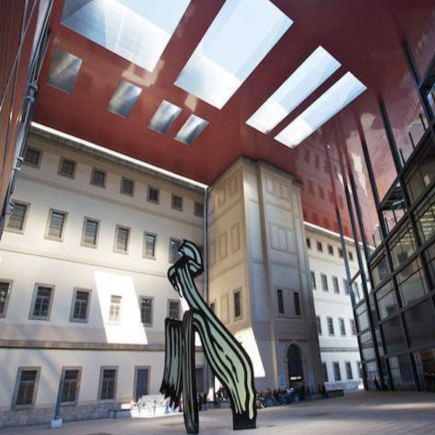
Madrid’s Reina Sofia Museum for the first time is hosting an extensive exhibition of modern and contemporary art from Morocco from March 21st – September 27th, 2021 themed “Moroccan Trilogy 1950-2020.” Thanks to the collaboration of the Foundation of the National Museum of Morocco, this six-month exhibition was organized by Manuel Borja-Villel and Abdellah Karroum containing 250 works from the last seven decades in Morocco.
This six-month exhibition at Madrid’s Reina Sofia Museum will showcase 250 works from the last seven decades in Morocco.
“Moroccan Trilogy 1950-2020” examines how the art of the kingdom of Morocco’s practices developed during its three historical moments, from the days of independence and identity of the 1950s and 1960s, through the era of internal conflicts of the 1970s and 1980s, until present.

The artists featured in the exhibition had a great influence on Moroccan modern art and art education in the School of Fine Arts in Casablanca (ESBAC). The majority continued their studies abroad and returned to Morocco with the intention to introduce modernity to Moroccan art. Mohamed Melehi, Mohamed Chabâa with Farid Belkahia, Mohamed Hamidi, Mohamed Ataallah, and Mustapha Hafid are some of the artists who studied overseas yet came back to their homeland. These multimedia, Moroccan artists are represented via their creations of poetry, cinema, painting and sculpture. The intention of the exhibition is to highlight Moroccan Modern Art and strengthen the cultural and historical links between the two neighbors; to revive the cultural past of Andalusia.
“With this exhibition, it’s telling a history of art in Morocco from a more neutral view,” Karroum told Arab News.
Abdellah Karroum, the show’s co-curator, prioritized creating an in depth research-based, experience which he found was lacking from previous showcases of art from his native country. “It was more promotional and touristic than historical. With this exhibition, it’s telling a history of art in Morocco from a more neutral view,” Karroum told Arab News. “Many artworks that you can see in ‘Moroccan Trilogy’ are addressing the ideas of freedom, equality, emancipation. In this period in Morocco, there was an active participation of artists and intellectuals, who were finding new social models, (showing) how artists are contributing to the making of a social fabric.” For many Spaniards, he said, the exhibition has been like “discovering an art scene.” The show opens with powerful canvases by modernists Ahmed Cherkaoui and Ahmed Amrani, among others, who were influenced by their artistic heritage and political surroundings. “Artists started to build a strong language to look for an identity that would detach and liberate them from the colonial power,” noted Karroum.





